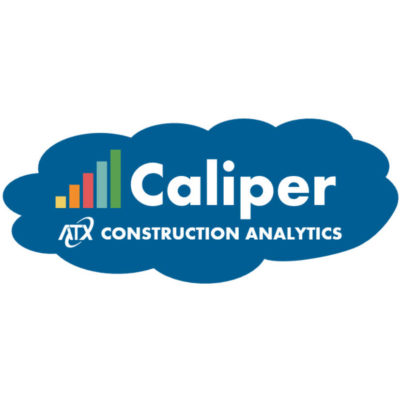Have you joined the AI conversation, or are you still wondering how to jump in? For over a year now, AI has been a dominant theme across industry, and is becoming an accepted convention of modern times. Seminars highlighting industry-specific use cases continue to crop up, while comprehensive productivity tools like Microsoft Copilot are becoming standardized features in new technology releases.
Broadly speaking, the anticipation for AI’s transformative impact on daily life is at a fever pitch. We are riding the technological “hype cycle” with AI and we’re right at the peak.¹ Like the highest point on any roller coaster ride, however, there’s an inevitable drop that follows. In AI’s case, there will likely be a decrease in excitement and “hype” around AI as it becomes less novel, and more ingrained. The tech is transformative without question, but its tangible effect on everyday life may not meet our lofty expectations in the here-and-now. Many tasks, even relatively simple ones, may take years before they are refined. AI can’t be the “easy button” to every problem, but it presents an opportunity to capture value long-term for those willing to enable themselves in a thoughtful fashion.
To make the long-road to AI Enablement more tangible, ATX has developed a 5-stage model to help organizations identify their readiness level and guide them towards AI competency.
These 5 stages are:
AwarenessExploration
Enablement
Adoption
Innovation
Whether an organization is at the Stage 1 starting line, or if it’s already experimenting with industry-specific tools, AI Enablement is an iterative process from front-to-back. Fortunately, we are all at the beginning of this technological revolution together, and now is the perfect time to start no matter where your organization stands. Now, let’s take a deeper dive into each stage, starting with AI Awareness.
Stage 1: Awareness
This initial phase involves cultivating a basic understanding of AI technologies and their potential benefits across the organization. Here the goal is to demystify AI by understanding its industry-relevance, discovering examples of AI applications in similar sectors, and highlighting how it can enhance efficiency, decision-making, and customer relations. Coming out of this step, organizations should be fostering heightened interest among employees and management, while also better-grasping the importance of staying competitive and responsive to evolving AI-driven market demands.
Some activities that can be carried out in this stage are:
- Attending industry webinars and workshops on AI
- Researching AI trends and applications in relevant sectors
- Giving staff time to familiarize themselves with AI concepts and terminology
Stage 2: Exploration
Once an organization has developed some familiarity, it should begin experimenting with basic AI tools and proofs of concept. Encourage team members to incorporate common tools like ChatGPT into their daily tasks - whether it’s using ChatGPT in an advisory role as content proofreader, or in an assistant role to draft content. The goal here is to foster proficiency and confidence at a basic but functional level. Doing this lays the groundwork for more focused exploration of specific applications.
Some activities that can be carried out in this stage are:
- Using chat tools like ChatGPT and Gemini to generate text and answer questions
- Using code generation tools like ChatGPT to help write code faster and easier
- Using department-specific tools to generate content, or Copilot to generate presentation summaries (avoid using data with real client names, financial metrics, etc.)
- Asking AI tools for suggestions and feedback on content (again do not use firm-specific data)
- Sharing learnings and discoveries with colleagues and managers
Stage 3: Enablement
AI Enablement sets the stage for adoption. To become enabled, firms must focus on building up their technical know-how and data infrastructure. This involves evaluating data readiness, enhancing technical skills, and setting up adequate guidelines and procedures around AI. It’s also important to emphasize the critical role of data quality and governance to stakeholders as it relates to successful AI implementation.
Some activities that can be carried out in this stage are:
- Reviewing data infrastructure, quality, and governance
- Training staff, hiring AI expertise, or partnering with AI solution providers
- Establishing governance and risk management frameworks for AI initiatives
Stage 4: Adoption
Once enabled, organizations may begin to integrate AI solutions into specific workflows to optimize processes. This stage includes pinpointing key areas where AI can provide maximum benefits, conducting pilot projects to evaluate AI solutions on a smaller scale, and scaling successful initiatives across the organization. The goals of this stage are to showcase tangible wins by effectively applying AI in chosen scenarios, as well as accumulating deeper hands-on experience with a broader array of AI technologies.
Some activities that can be carried out in this stage are:
- Identifying priority use cases
- Designing and executing pilot projects with clear goals, metrics, and timelines
- Collecting and analyzing data and feedback from pilot projects
- Scaling AI solutions based on pilot outcomes and learnings
- Monitoring AI performance and impact
Stage 5: Innovation
The fifth and final stage, AI Innovation, is a bit more intangible. AI is still novel, and it’s evolving quickly; therefore, painting a definitive picture of the optimized user is not realistic in 2024. Generally, however, those who succeed at adopting AI will have the best chance to push its boundaries forward. Investing in R&D, fostering a culture of innovation, and collaborating with external partners to remain at the cutting edge are characteristics of any technological pioneer, and AI will have its pioneers. Ideally, these entities will use AI for the greater good, and in doing so pursue new avenues for AI to enhance operational efficiency and service quality.
Some activities that may be carried out in this stage are:
- Allocating resources to explore cutting-edge AI technologies and methodologies
- Encouraging experimentation and idea generation among staff
- Engaging with AI startups, research institutions, or other organizations to push innovation
- Seeking feedback and input from clients and communities on AI solutions and needs
- Sharing AI successes and learnings with peers and stakeholders
For an organization just beginning its AI journey, the next step should be building internal awareness and literacy with AI. Encourage employees to explore standard AI tools like ChatGPT or Gemini, and create space for staff to share their experiences with management and with each other. There are also plenty of online resources that can help familiarize your people with AI – we’ve linked a few below for you to check out.
The AI Enablement journey is not just about technology; it's about preparing your people, refining your processes, and wisely managing your technology. Set your team up for success by encouraging them to find creative AI solutions to problems they face - furthermore, identify & empower change leaders who take the ball and run with it. Regarding your processes, it's key to agree on data terminology to avoid confusing your AI model. Pinpoint where AI fits best, assess risks, create standard operating procedures, and work to establish clear governance policies that manage internal use. Managing your technology is key as well - securing and centralizing your data reduces risk and creates an environment an AI model can more easily navigate. Additionally, moving towards advanced platforms will ensure scalability as AI becomes more prevalent. By addressing these areas and employing an iterative, measured approach towards AI fluency, you're setting up a solid foundation for artificial intelligence to upgrade your operations and services.
Helpful Resources:
Introduction to Generative AI - Google
If you have any questions about ChatGPT- feel free to reach out at andrew.hutchins@atxadvisory.com - I'm always happy to discuss!
Author: Andrew Hutchins
Reference
Diamandis, P. H. (2017, September 17). 5 Stages of the Hype Cycle. www.diamandis.com. https://www.diamandis.com/blog/5-stages-of-the-hype-cycle




